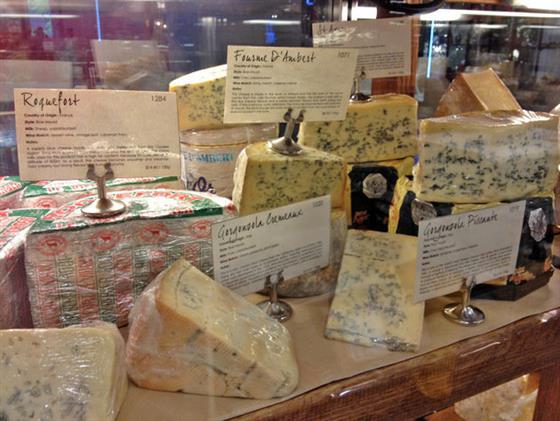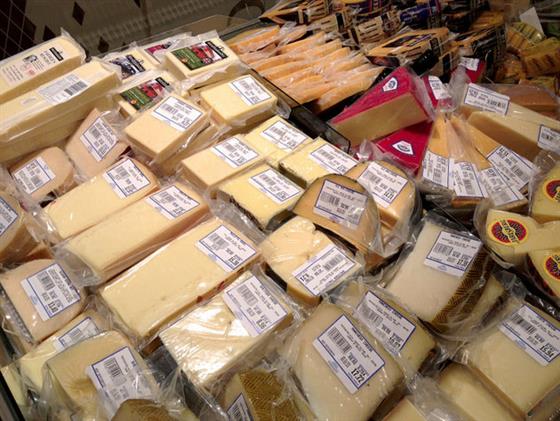
Your Cheat Sheet on Cheese
By Catherine Ling - Monday, Jan 14, 2013
If all you know about cheese is whether they are sliced or smelly, take heart, you are not alone. Getting to know cheeses can be daunting, especially when you survey the bounty in supermarkets and gourmet grocers these days. But if you’re adventurous (and not afflicted with lactose-intolerance), cheeses can bring you on a journey of intriguing tastes and textures.
What’s it made of? Cheese can be made from the milk of many animals, predominantly cow, goat, sheep, but also water buffalo, camel, horse, pig, reindeer, and yaks.
How is it made? A starter bacteria culture is added to warmed milk, which begins the fermentation process. Then a coagulant is added (usually the enzyme rennet). The solid curd is formed and the liquid whey drained away. The cheese is then salted and aged. Actual production processes vary. Some cheeses are cooked, some are fresh.
Categories There are many ways to classify cheese, but probably the most common is by texture and manufacturing process:

Soft Fresh Cheese: these are soft cheeses that are often spreadable, without rinds, and still have a milky taste. Their shelf life is usually short. Cream cheese, cottage cheese, feta or goat cheese, Mascarpone, Mozzarella and Ricotta fall under this category, many of which are often used in desserts, salads and pizzas.
Semi-soft Cheese: these are generally young cheeses that are smooth and creamy with little or no rind. You’ll find Colby, Gouda, Havarti, Monterey Jack, Munster, Port Salut, and Provolone here.
Semi-hard Cheese: these are often supple and elastic, with a salty flavour. These include most famously Cheddar, Gouda, Edam, Gruyere, and Swiss (Emmentaler) cheese with its signature large holes created by bacteria blowing carbon dioxide bubbles.
Hard Cheese: these are cooked during production often at high temperatures to expel excess moisture, and can be aged for years. The flavours are often sharp and concentrated, and their hardness lends well to grating (especially over pastas, soups and salads). Hard cheeses also contain the least lactose. Examples include Asiago, Grana Padano, Manchego, Mimolette, Parmesan, Pecorino.
Cheeses that feature moulds are particularly fascinating (how ironic that we baulk at mould on bread but would gladly put mouldy cheese on bread):
Soft Ripened Cheese: cheeses with edible white bloomy rinds include Camembert and Brie. Spread soft cheeses on crusty breads or enjoy with fresh grapes.
Washed Rind Cheese: these cheeses are cured in briny solutions (sometimes with a little beer, cider, wine or liquor) in addition to controlled bacteria. This encourages pungent flavours and a rind around the soft or semi-soft interior. Epoisses, Limburger, Livarot, Taleggio are some examples.
Blue Cheese: these are semi-soft cheeses that have had special mould spores injected into them to develop the characteristic blue veins. The result is an earthy, creamy taste that can also be tangy or salty. Good with fresh fruits and nuts, cooked meats, pastas and dips. Look for Roquefort, Gorgonzola, Stilton or Danish Blue.
The main thing about discovering cheeses is keeping an open mind. The same variety from different countries can also taste different, so have fun trying a little bit of everything!



